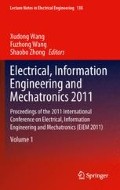Abstract
To have dynamic emergency escape instructions to guide the trapped workers, underground emergency escape system based on the internet of things is studied. It uses nodes to monitor the concentration of gas in coal mines. The nodes, distributed in the mine, are the component units of the wireless network. If the concentration exceeds the warning line, it broadcasts an emergency signal to the whole network and calculates the next safe evacuation direction through the data collected by real-time algorithm and displays the direction on the LED dynamically. By then, the network shows a number of security paths pointed by all the individual nodes connected together. So it most likely avoids the dangerous areas consisted by disaster nodes and guides people to flee the danger zone.
Access this chapter
Tax calculation will be finalised at checkout
Purchases are for personal use only
References
Jang W, Healy W, Skibniewski M (2008) Wireless sensor networks as part of a web based building environmental monitoring system. Autom Constr 17:729–736
Stallings W (2005) Wireless communications and networks. 2nd edn. Pearson/Pretice Hall, New Jersey
Li JSM, Chow WKN (2003) Numerical studies on performance evaluation of tunnel ventilation safety systems. Tunn Undergr Space Technol 18:435–452
Pomroy WH, Carigiet AM (1995) An analysis of underground coal mine-fire incidents in the United States from 1978 through 1992. In: Proceedings of the seventh US mine ventilation symposium, Lexington KY U S A pp 5–7
Simcox S, Wilkes NS, Jones IP (1992) Computer simulation of the flows of hot gases from fire at King’s Cross underground station. Fire Safety J 18:49–82
Wala AM, Dziurzynski W, Tracz J, Wooton D (1995) Validation study of the mine-fire simulation model. In: Proceedings of the seventh US mine ventilation symposium, Lexington pp 5–7
Acknowledgments
This work is supported by the Research Foundation of Education Bureau of Henan Province (Grant No 2009B510008) and Doctorate Program of Henan Polytechnic University (Grant No B2009-27).
Author information
Authors and Affiliations
Corresponding author
Editor information
Editors and Affiliations
Rights and permissions
Copyright information
© 2012 Springer-Verlag London Limited
About this paper
Cite this paper
Li, H., Sun, Y., Zhang, L. (2012). Underground Emergency Escape System Based on the Internet of Things. In: Wang, X., Wang, F., Zhong, S. (eds) Electrical, Information Engineering and Mechatronics 2011. Lecture Notes in Electrical Engineering, vol 138. Springer, London. https://doi.org/10.1007/978-1-4471-2467-2_147
Download citation
DOI: https://doi.org/10.1007/978-1-4471-2467-2_147
Published:
Publisher Name: Springer, London
Print ISBN: 978-1-4471-2466-5
Online ISBN: 978-1-4471-2467-2
eBook Packages: EngineeringEngineering (R0)

